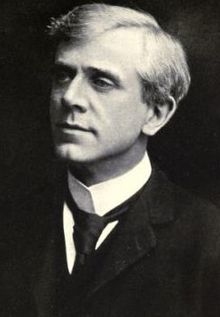John A. Pearson
John A. Pearson | |
|---|---|
 | |
| Born | June 22, 1867 Chesterfield, England |
| Died | June 11, 1940 |
| Nationality | Canadian |
| Occupation | Architect |
| Practice | Pearson and Darling |
John Andrew Pearson (June 22, 1867 – June 11, 1940) was an early 20th Century Canadian architect and partner to the Toronto-based firm of Pearson and Darling.
Pearson was born in Chesterfield, UK, and emigrated to Canada in 1888. Most of his architectural output is associated with a series of partnerships: he worked for Henry Sproatt beginning in 1890, joined Darling, Curry, Sproatt, & Pearson in 1892, with fellow partners Frank Darling and S. George Curry. Curry departed, and from 1893 through 1896 that office was known as Darling, Sproatt & Pearson, then finally stabilised into the successful and long-lasting Pearson and Darling from 1897 through Pearson's death in 1940 and buried at Mount Pleasant Cemetery.
Pearson's most significant project apart from this partnership is undoubtedly the Centre Block on Parliament Hill in Ottawa, a complex that contains the Canadian House of Commons and Senate of Canada, and the adjoining Peace Tower.
The previous Centre Block burned in 1916, entirely destroyed except for the Library of Parliament. By 1920 the Centre Block was rebuilt with a design by Pearson and collaborator Jean Omer Marchand of Montreal. The Peace Tower commemorating the end of the First World War was completed in 1927.[1]
Pearson was the first Vice-President of Ontario Association of Architects (1902). He died in Toronto, aged 72.
Works
See also
- Henry Sproatt - partnered with Pearson from 1890 to 1896
External links
- JA Pearson
- John A Pearson at The Canadian Encyclopedia
- Pearson and Darling
- Historic Places in Canada
References
- ^ Pound, Richard W. (2005). 'Fitzhenry and Whiteside Book of Canadian Facts and Dates'. Fitzhenry and Whiteside.





